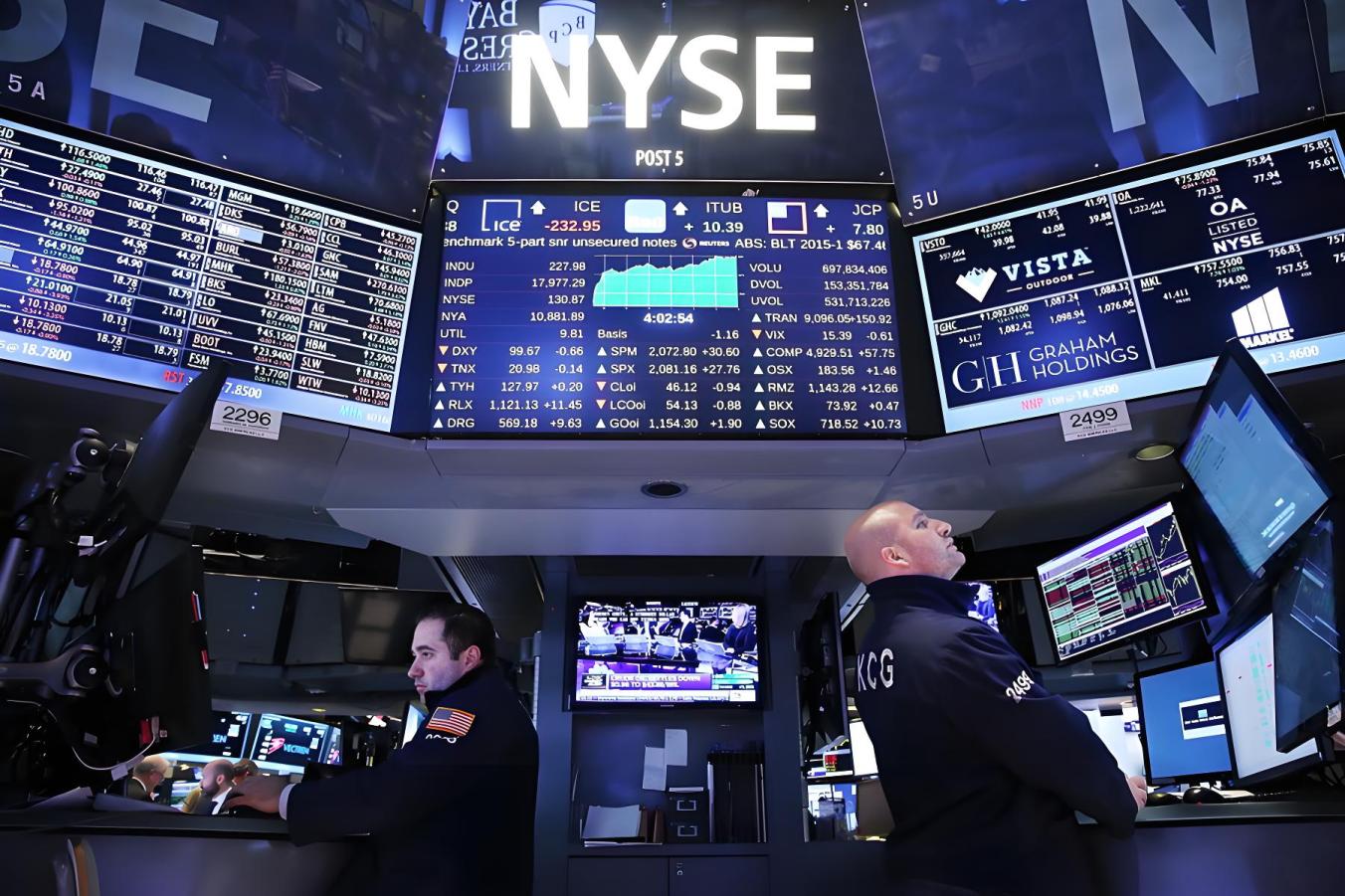
This week, North America officially entered Daylight Saving Time, and the trading hours of financial markets were advanced by one hour compared to Standard Time. However, on the first trading day of Daylight Saving Time, the US stock market suffered a severe setback, with all three major stock indices experiencing significant declines.
As of the close of trading on March 10th, local time, the Dow Jones Industrial Average closed at 41,911.71 points, down 890.01 points or 2.08% from the previous trading day; the Standard & Poor's 500 Stock Index closed at 5,614.56 points, down 155.64 points or 2.70%; and the Nasdaq Composite Index closed at 17,468.33 points, down 727.90 points or a staggering 4.00%. Such a significant decline took many investors by surprise and triggered concerns about the subsequent market trend.
On the trading floor, nine out of the 11 sectors of the S&P 500 index declined, while only two rose. The technology sector led the decline on the day, with a drop of 4.34%. As an important part of the US stock market, the collective slump of technology stocks had a huge impact on the overall market trend. Among them, Tesla's stock price attracted particular attention, with a decline of over 8% on the day. Recently, many institutions such as UBS and Goldman Sachs have successively downgraded Tesla's target price. UBS believes that Tesla's long - term growth story is shifting towards AI, but its valuation has been overly inflated; Bank of America downgraded its target price due to a decline in new car sales and the lack of progress on Elon Musk's low - cost model announcement; Goldman Sachs also pointed out that Tesla faces fierce competition in the autonomous driving system in China. With multiple negative factors overlapping, Tesla's stock price has been halved from its highest price, dealing a major blow to the confidence of the entire technology sector.
The non - essential consumer goods sector also performed poorly, with a decline of 3.90%, closely following the technology sector. Consumers' spending on non - essential consumer goods is often closely related to economic expectations. The decline of this sector to some extent reflects the market's concerns about the economic outlook. In contrast, the utility sector and the energy sector rose by 1.04% and 0.95% respectively, showing relative strength in the overall market decline. The utility sector, due to its stability, often becomes a safe haven for funds during market turmoil; while the rise of the energy sector is related to the recent fluctuations in international oil prices and the uncertainty of energy supply.
The reasons for the sharp decline in US stocks this time are multi - faceted. From a macro - economic perspective, a series of recently released economic data have been underwhelming. The February non - farm payroll report released by the US Department of Labor showed that non - farm payrolls increased by 151,000 in February, falling short of market expectations; the unemployment rate in February was 4.1%, reaching a new high since November last year and slightly higher than expected. Employment data is a barometer of the economy. The instability in the job market directly affects consumer confidence and spending power, and has a negative impact on the overall economy. As a result, investors are worried about the economic outlook and are selling stocks one after another
In addition, the uncertainty in policy has also brought huge pressure to the market. US President Trump's tariff policy has been erratic. In just six weeks, he changed the tariff policy on imported goods from Mexico and Canada twice, threatening to impose high tariffs one moment and then suspending it temporarily the next. Such frequent changes in policy make it difficult for companies to formulate long - term investment and production plans and also increase the decision - making difficulty for investors, greatly increasing market uncertainty. Economists generally believe that the uncertainty of tariff policies makes it extremely difficult to predict economic growth, inflation, and interest rates, interfering with the Bank of Canada's interest rate decisions and thus significantly increasing the risk of economic recession. This undoubtedly exacerbates investors' panic and prompts a large amount of capital to withdraw from the stock market.
Regarding this sharp decline in US stocks, the market has various reactions. Some investors have suffered asset losses, especially those who are heavily invested in technology stocks and non - essential consumer goods stocks, with a significant shrinkage in net asset value. While some short - selling institutions have made profits in this decline. They laid out in advance and took advantage of the market decline to achieve profitability. However, overall, the panic in the market is spreading. The "fear index" VIX touched its highest level since December 18th last year, rising 3.52 points to 26.89.
Looking ahead, investors will closely monitor the release of more economic data and policy trends. The US inflation data to be released on Wednesday, local time, will become the focus of market attention. Investors hope to find signs of a Fed rate cut from it. If the inflation data performs poorly, it may further increase the pressure on the Fed to cut interest rates, and changes in rate - cut expectations will in turn have a significant impact on the stock market trend. In addition, whether the tariff policy will be further adjusted and whether the job market can improve will all influence investors' decisions and the market's direction.
The sharp decline of US stocks on the first day of Daylight Saving Time has sounded the alarm for the global financial market. The uncertainty and risks in the market are increasing. Investors need to be highly vigilant and carefully adjust their investment strategies to cope with potential market fluctuations.

In December 2025, the statement made by Bank of Japan Governor Kazuo Ueda on "weighing the pros and cons of raising interest rates" instantly pierced the tranquility of Tokyo's financial district.
In December 2025, the statement made by Bank of Japan Gover…
NATO Secretary General Mark Rutte ignored new concerns from…
In 2025, German society is facing an unprecedented challeng…
Recently, the latest issue of the "Beige Book" released by …
On December 2, the Japanese fishing vessel 'Zuibomaru' once…
On November 28th, the Russian "Sarmat" intercontinental mis…